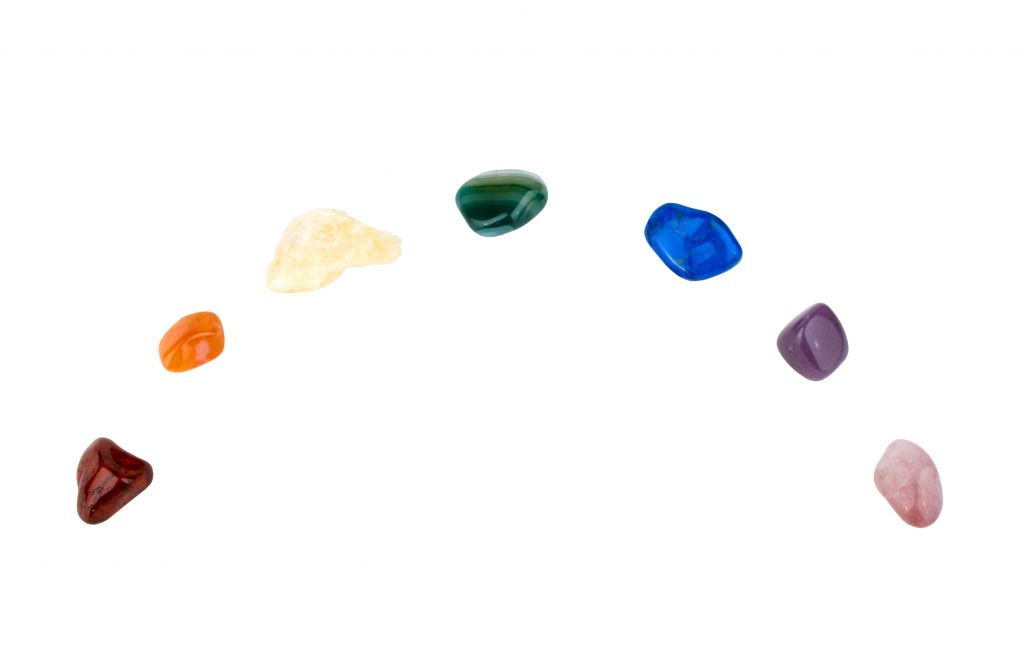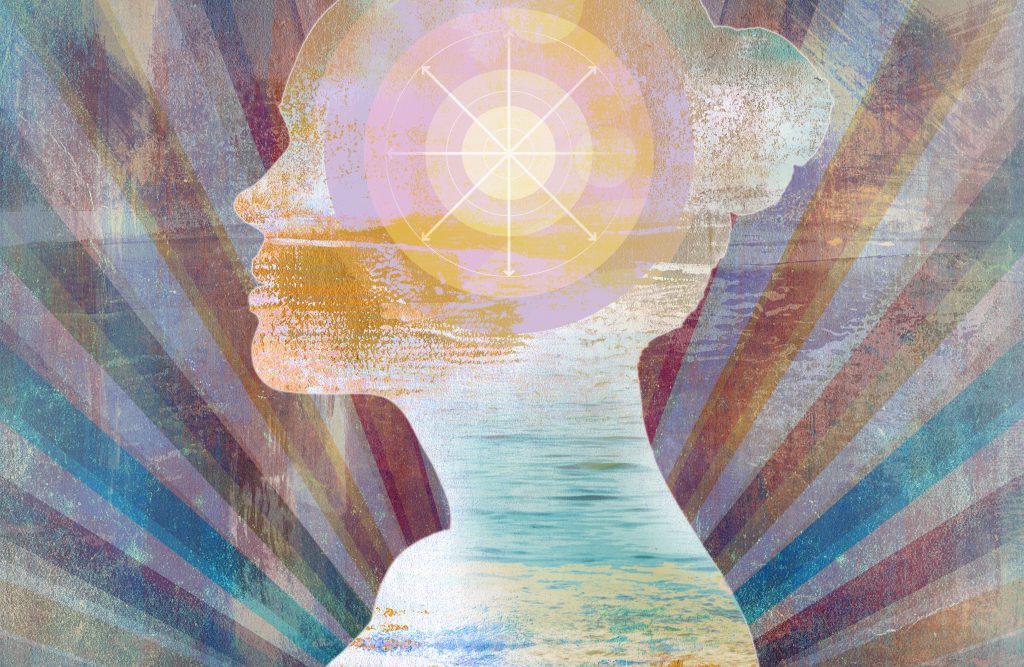We often search for answers to our most pressing issues and personal problems by looking outward. We seek distractions and solutions from things, places, events, and even other people. Sometimes, a peaceful state of mind lies within ourselves.
The art of Vipassana meditation — an ancient meditative technique over 2,500 years old — is proof of that.
As scientists search for where consciousness comes from, the answer has become murkier. What has become apparent is that ancient practices appear to have understood how to achieve a state of mind that produces health and happiness.
Vipassana meditation is aimed at calming the mind and taking the brain into a state of relaxation. The idea that consciousness does not come from the brain has been a practice based in many ancient cultures.
Today neuroscientists measure the benefits of meditation technique on the brain. By recording brain waves, they are finding that Vipassana meditation may help healing brain frequencies, reduce anxiety, cure depression, and increase the function of your mind.
What is Vipassana Meditation Technique?
“Vipassana” roughly translates to “insight,” which adequately embodies the driving principle behind this meditative practice.
Vipassana meditation employs introspection to lead the meditator down the path of self-transformation. Through intense concentration, Vipassana meditation is said to be capable of unveiling the truth behind reality itself.
While difficult to understand at first, it means that through self-observation, the meditator can see the deep interconnection between his or her physical form and mind.
Benefits of Vipassana Meditation Technique
Peace of mind is one of the most widely reported benefits of this ancient meditation technique.
Others benefits include:
- Feeling of happiness
- Feeling of calm
- Reduce anxiety
- Better time management
- A sense of peace with failure
- A release from stresses of life
- Increased awareness
- A widened perspective
- Improved mobility
- Better sleep
Scientists have been reluctant to conclude on the benefits of Vipassana meditation technique. Previously there was mainly anecdotal evidence — including a recent study in a medical journal and an essay published by a reputable news source — to give some merit to the practice.
Here is a summary of research over the last 20 years:
- In 2001: one study looked at the effects of the Vipassana meditation technique and found:
“Through direct experience, the nature of how one grows or regresses, how one produces suffering or frees oneself from suffering is understood. Life becomes characterized by increased awareness, non-delusion, self-control, and peace.” (3)
- A 2015: study looked at a group of 122 people pre and post vipassana meditation. They concluded:
“Mindfulness change scores between pre-course and 6-month follow-up were moderate to highly correlated with outcome variable change score” (4)
- In 2016: a study on 20 people concluded similarly:
“1-month Vipassana meditation retreat seems to yield improvements in mindfulness, well-being, and personality, even inexperienced meditators” (5)
Vipassana Meditation, Reduce Anxiety with Theta Brain Waves
Neuroscientists have begun to use brain waves as a way to measure the mental health of individuals.
There are five main frequency brain waves:
- Beta: awake, normal alert, consciousness
- Alpha: relaxed, calm, lucid, not thinking
- Theta: deep relaxation and meditation, mental imagery
- Delta: Deep, dreamless sleep
- Gamma
These brain waves are in constant motion, and the brain produces consistent waves at all frequencies.

Image: Brain wave frequencies and states of consciousness.
Theta waves are slowed down at a frequency of 4-7 cycles per second.
Both Alpha and Theta brain waves may have benefits including:
- Relieve stress and promote a lasting and substantial reduction in people prone to anxiety states.
- Facilitate a deep physical relaxation and mental clarity
- Increase verbal ability and also the performance IQ, verbal.
- Better synchronize the two hemispheres of the brain.
- Recall mental images live and spontaneous imaginative and creative thinking.
- Reduce pain, promote euphoria, and stimulate the release of endorphins.
A 2019 study used EEG brainwave measurements to assess outcomes in meditators.
Seeking to measure the physical and psychological effects of Vipassana meditation, the researchers gathered a small group of willing participants sampled from a multi-ethnic population in Muscat, Oman. The participants joined a Vipassana meditation course in a ten-day residential retreat, after which they reported significantly higher levels of physical and psychological well-being based on their self-assessment.
They looked at alpha waves, theta waves, and alpha-theta wave coherence and concluded:
“Vipassana meditation enhanced alpha de-synchrony and lesser theta-alpha coherence in the more proficient meditators.” (6)
What happens during Vipassana meditation?
In 2015, Zoe Schlanger wrote about her experience in joining a ten-day Vipassana meditation retreat for Newsweek. In her article, she shared details about how she felt when she came back to New York City from the Vipassana Meditation Center in Shelburne, Massachusetts.
These are the changes she noticed:
- Schlanger realized that her outlook towards her home city had changed. “When I got home, New York City was briefly unmanageable,” Schlanger wrote. “I felt daunted by the task of conversation, and socializing was unappealing.”
- According to her, she became less concerned about the opinions of others, more patient and appreciative of the things around her, and more attentive to events that were taking place in her immediate environment.
- Furthermore, she also reported a decreased level of self-pitying, worrying about the future, and stressing over her past mistakes and failed relationships.
- Before leaving for the retreat, she had her thyroid and cortisol levels tested. When she got tested after her solitude, she found that her thyroid levels had dropped by one point, and her levels of cortisol (the so-called “stress hormone”) decreased by nearly ten points, a feat that her doctor said would take months for a stress-reducing supplement to accomplish.
Of course, because Schlanger’s article was a personal account, it can’t be treated with the same weight as a scientific study.
Nevertheless, the fact that someone who had just undergone the meditative process would be able to glean such insights from her own experience says a lot about Vipassana’s impact on a personal level.
Who started Vipassana meditation?
Behind the methodology of Vipassana meditation lies a rich history deeply ingrained in spirituality.
Vipassana is said to be the oldest among the traditional meditation practices of Buddhism. Remarkably, the practice supposedly comes directly from the Satipatthana Sutta, an ancient text believed to have been from Gautama Buddha himself.
Vipassana meditation was widely practiced in India for around half a millennium before it all but disappeared from the country. Its survival was ensured, however, by the influx of meditation teachers from Myanmar (formerly Burma).
Eventually, the efforts of a retired industrialist named S. N. Goenka resulted in the reinstatement and revival of the Vipassana practice in India. Born and raised in Myanmar himself, Goenka began teaching Vipassana meditation in India in 1969, and devoted himself to spreading the craft until his death in 2013.
Nowadays, with Vipassana’s resurgence in popularity, word about the practice is spreading across the world, and more and more people are starting to be curious enough to experience it and its reported benefits for themselves.
4 Step Guided Vipassana Meditation
Now we understand how Vipassana meditation can benefit the brain, the next question to ask is: How exactly does perform the practice?
The Vipassana meditation procedure, unlike other meditative practices, is not usually practiced on your own when you’re starting.
However, in this article, we’ll show you how to begin and see if it’s the type of meditation for you.
If you feel the benefits you can sign up for a ten-day residential course, administered by an experienced guide. The course abides by a specific Code of Discipline especially designed for Vipassana meditation. In the ten-day course, you will not only learn the fundamentals of Vipassana meditation, but you’ll also be able to do it enough times and feel how it helps bring about changes in your life.
At most retreats, Vipassana meditation technique is not taught at a cost but is offered for free. You do not have to pay your instructor, or for food or accommodation. The courses are funded via donations from past participants who felt that the Vipassana meditation technique improved the quality of their lives and their overall disposition.
Make no mistake, however: The Vipassana meditation course is far from a cakewalk. It’s an investment of time and money, and it’s a multi-step training course — the full impact of which won’t be felt until after a long period of repetition.
- General recommendations are to abstain from committing any legal offenses, taking a break from sexual activity, preventing yourself from lying and spreading gossip and rumors about other people, and saying no to intoxicants such as alcohol.
- Set a time in the day to focus on your technique and commit to a 10-day period to practice meditation.
- Sit in a comfortable position. Stop thinking of anything else. This step is crucial because the Vipassana meditation technique will only work as intended if your mind is clear, free, and unobstructed for introspection.
- After that, practice having complete control over your mind. The easiest way to to completely focus on your breath.
- Pay close attention to how you inhale and exhale, from the moment air enters through your nostrils and reaches your lungs until you breathe out and get ready to take another breath.
You should feel a sense of calm over yourself. You may already be noticing changes in the way you process your thoughts and perceive your environment by the time the fourth day of the retreat rolls in. In this stage, you’ll feel yourself becoming more perceptive and well-attuned to the signals sent by your body. You will be able to master how and when to react to certain stimuli, as well as how to bypass and ignore them.
The course will continue as usual, with the regular breathing exercises and practice sessions, up until the last day. On the final day of the course, you will have achieved full mastery of the meditation technique, while developing a sense of unity, camaraderie, and a certain degree of warmth and love not just for humanity, but for all the living creatures on the planet.
Conclusion
In summation, the Vipassana meditation technique sharpens and strengthens the mind to allow you to surpass the limitations of the body. Think of it as a mental exercise program of sorts, to ensure that your brain is always in prime condition.
It bears repeating that to expect your problems to dissolve after the ten-day retreat would be incredibly naive. Naturally, as with every activity worth doing, practice is the key to mastery. Make time during your days after the retreat to engage in Vipassana meditation on a regular basis, so that your hard work and progress would not be undone.
Practitioners of Vipassana meditation acknowledge that the road to recovery through the technique is a long and gradual process. They are careful to clarify that such a level of awareness does not come instantaneously; rather, it is the product of steady and consistent sessions, spanning even years.
If it’s a quick remedy to your internal issues and problems that you seek, perhaps it would be better for you to examine other meditative procedures. If, however, you are the type who is not only patient but can also adhere to a routine, then this might be the perfect meditative technique for you and your lifestyle.
Are you interested in trying Vipassana meditation, or have you ever experienced it yourself?
Leave your thoughts in the comments section below!
Sources:
- https://tricycle.org/magazine/vipassana-meditation/
- https://www.dhamma.org/en/about/vipassana
- https://www.ncbi.nlm.nih.gov/pubmed/24019714
- https://www.ncbi.nlm.nih.gov/pubmed/24515781
- https://www.ncbi.nlm.nih.gov/pmc/articles/PMC5149565/
- https://www.ncbi.nlm.nih.gov/pubmed/30732834


 Inducing slow, theta brain waves, could be the key to the ancient Vipassana meditation technique.
Inducing slow, theta brain waves, could be the key to the ancient Vipassana meditation technique. 






















